Promoting Hunger & Homelessness Awareness Week
November 8, 2018
Social media is a great way to promote your events, and to build healthy and compassionate communities! See our Promotional Content page for sample social media posts, images, newsletter and blog content!
Please use the tags #HHWeek or #ShareYourTable.
Be sure to tag us wherever you can, so we can see the great work you are doing! And be sure to follow our social media, as well as our blog for updates during the week.
https://www.facebook.com/hhweek
https://www.twitter.com/hhweek
https://www.instagram.com/hhweek/
Building Healthy and Compassionate Communities
November 7, 2018
In over 25 years of running National Hunger & Homelessness Awareness Week, we have found that one of our biggest challenges in making lasting impact to stem the tide of hunger, homelessness and poverty is upholding the values of basic human rights. A clear route for protecting our shared human needs is through compassion. We are excited to offer two special partnerships for HHWeek participants to take advantage of!
- We are excited to partner with CompassionIt for the 2018 Hunger & Homelessness Awareness Week. CompassionIt
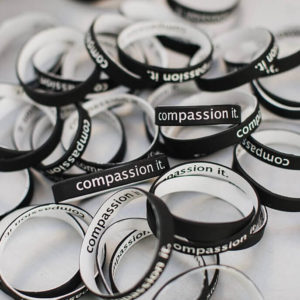 makes compassion a verb. As a nonprofit organization and social movement, their mission is to inspire compassionate actions and attitudes.Registered participants will receive an exclusive coupon code for 65% off CompassionIt wristband 2-packs and Self-CompassionIt 2-packs. Further volume discounts are available on the CompassionIt website: https://compassionit.com/shop/.You are also invited to take part in a unique “Introduction to Compassion” online training that will occur on Tuesday, November 13, 2018 – which also happens to be World Kindness Day . Registration is just $25, and will give you an hour-long insight into how to use compassion for yourself and those around you to help lift up your communities and work towards an end to homelessness. Register at https://compassionit.com/product/intro-to-compassion-for-hunger-homelessness-awareness-week/
makes compassion a verb. As a nonprofit organization and social movement, their mission is to inspire compassionate actions and attitudes.Registered participants will receive an exclusive coupon code for 65% off CompassionIt wristband 2-packs and Self-CompassionIt 2-packs. Further volume discounts are available on the CompassionIt website: https://compassionit.com/shop/.You are also invited to take part in a unique “Introduction to Compassion” online training that will occur on Tuesday, November 13, 2018 – which also happens to be World Kindness Day . Registration is just $25, and will give you an hour-long insight into how to use compassion for yourself and those around you to help lift up your communities and work towards an end to homelessness. Register at https://compassionit.com/product/intro-to-compassion-for-hunger-homelessness-awareness-week/ - We are also excited to be able to offer exclusive access to a free screening of the short film, The Mission. The film depicts a struggling family of three living out of their Van, but trying to carry on as normal, and revolves around Sunny, a
 teenage girl desperately trying to pursue her passion: playing the trumpet in her school band. Her dire situation of living in a van with her little brother and father on the streets of Los Angeles presents seemingly insurmountable obstacles which work against her – and the film then examines the challenges behind everyday routines easily taken for granted, and how the struggle to comply with the rules of society takes a toll on keeping a family together. See the trailer: https://brf.co/video/the-mission-trailer/ .
teenage girl desperately trying to pursue her passion: playing the trumpet in her school band. Her dire situation of living in a van with her little brother and father on the streets of Los Angeles presents seemingly insurmountable obstacles which work against her – and the film then examines the challenges behind everyday routines easily taken for granted, and how the struggle to comply with the rules of society takes a toll on keeping a family together. See the trailer: https://brf.co/video/the-mission-trailer/ .
The film was made in collaboration with The Harmony Project, a nonprofit that provides tuition-free music education and social support to youth across Los Angeles. To further draw attention to the issue of homelessness, The Mission is being released in conjunction with National Hunger & Homelessness Awareness Week. H&H Week participants are able to screen the short film for free, and can use this link to access discussion questions to round out the screening.The Mission is produced by BRF (B-Reel Films), an award-winning and modern production company working across commercials, feature films, documentaries, branded content, interactive, and music videos. BRF operates out of Los Angeles and Stockholm.
So please be sure to register your events, and take advantage of these unique opportunities to expand your awareness events next week!
Official 2018 Hunger & Homelessness Awareness Week poster
November 5, 2018
Posters and stickers are in the mail for all those who have registered their events. Here is a sneak peak at the poster, and a link to download the image!
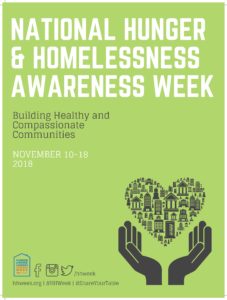
Meet Our 2017 Award Winners
February 19, 2018
After much deliberation, we are excited to announce the winners of our awards for the best Hunger and Homelessness Awareness Weeks of 2017!
These were difficult decisions, given the number of excellent events to choose from. We know that many of you ran amazing events last year and we wish we could do more to acknowledge everyone. In addition, some great organizations missed their chance for awards by choosing not to nominate their events for consideration.
With that said, we're proud to recognize six events that represent the very best of Hunger and Homelessness Awareness Week 2017.
Best Volunteer Event: Community Action Partnership of San Bernardino County
CAPSBC's Turkey Giveaway event provided resource boxes and 1,000 turkeys to low-income families in need. Turnout at the event was huge, with families lined up around the block to make sure they received a turkey. CAPSBC also held a resource fair at the Giveaway that was attended by 59 organizations and agencies.
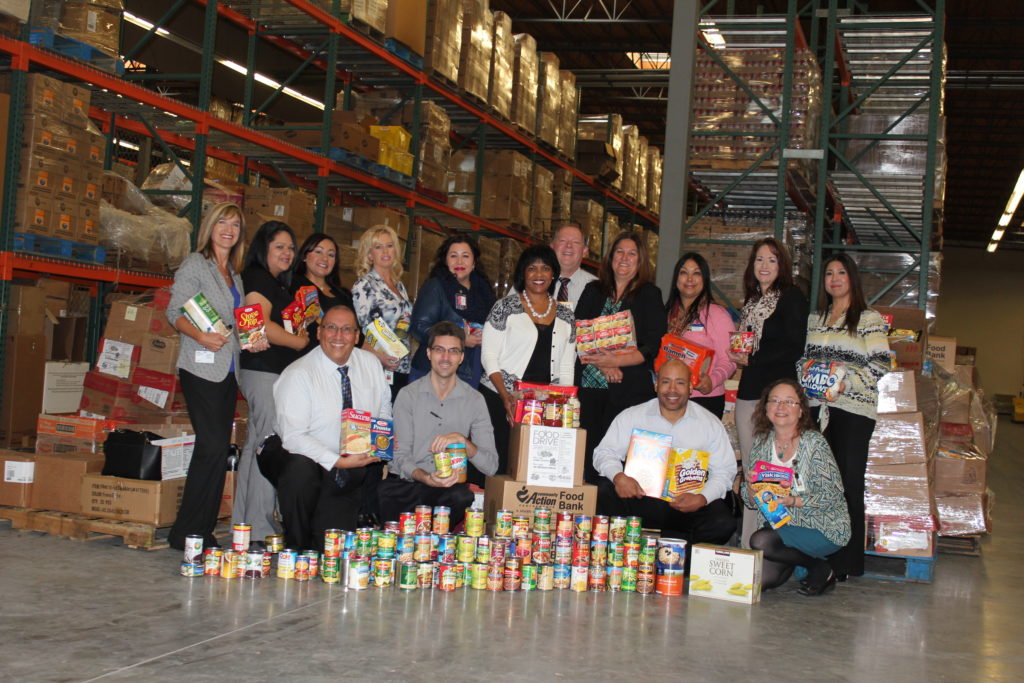
Best Fundraising Event: Missouri Western State University
The MWSU Organization of Student Social Workers held a Walk for the Homeless which raised $6,000 to pay for IDs, birth certificates, and transportation vouchers for people in need. Roughly 150 people participated.

Best Advocacy Event: EscaRosa Coalition on the Homeless
ECOH organized a "Path of Light" vigil for the homeless that drew 150 attendees and helped raise awareness about local anti-homeless ordinances. They also organized the City of Pensacola, Escambia County, and Santa Rosa County to pass proclamations officially recognizing the week as Hunger and Homelessness Awareness Week. At the vigil, the City of Pensacola announced that they will be donating $100,000 to ECOH.
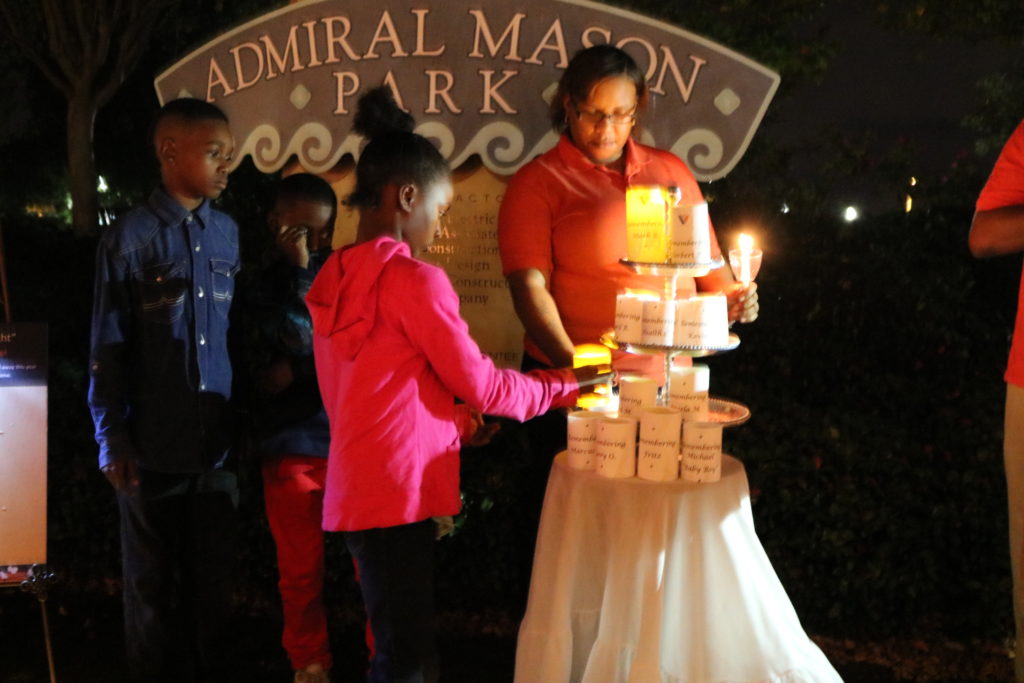
Best Awareness Week: University of California - Berkeley
The UC Berkeley Basic Needs Security Committee organized an impressive week of events on their campus. Their week involved a broad assortment of student groups, faculty members, campus staff, administrators, and local community members. Their events for the week included: a CalFresh Mega Clinic where nearly 200 students applied for SNAP benefits; a resource fair for low income students; a series of awareness events in the dining halls about food waste; a competition to develop innovative solutions to hunger and homelessness; two workshops on mental health issues and a workshop on financial aid; a community dinner; and a panel discussion including speakers from Congresswoman Barbara Lee's office, the Berkeley Food Institute, and the student government.
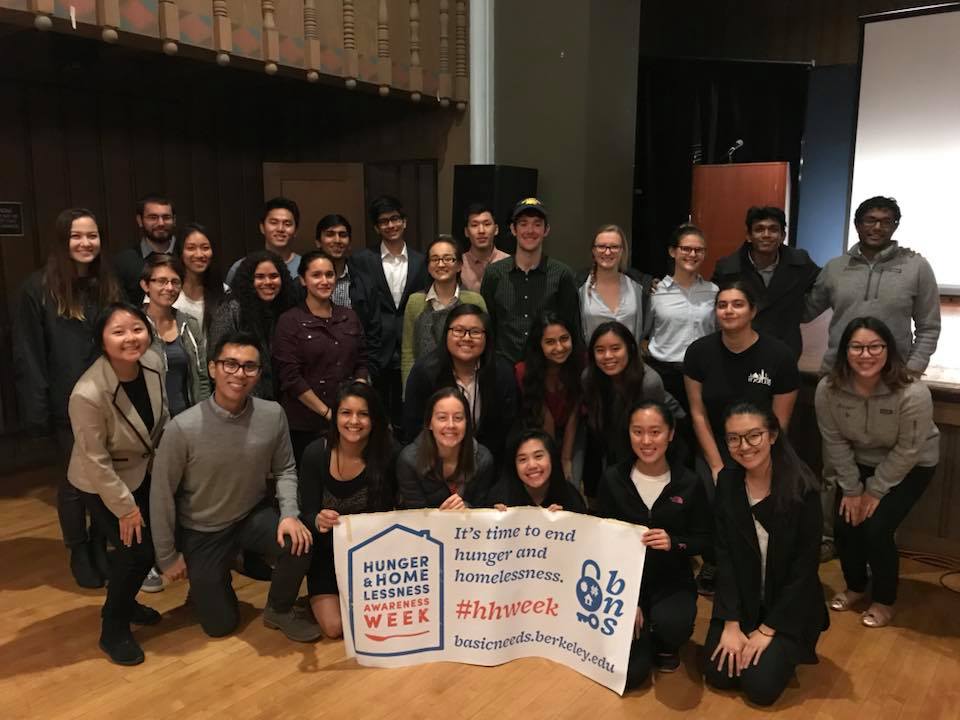
Best First-Time Awareness Week: Duke University
Duke's Coalition for Alleviating Poverty pulled together a jam-packed schedule for their first Awareness Week. They recruited 25 campus offices and organizations to participate in the week, collectively organizing more than 20 events. Events included: a food and hygiene drive; a presentation by a leading local advocate for the homeless; a documentary screening; a workshop about homelessness in the LGBTQ community; a dinner conversation with a university dean to discuss campus socioeconomic issues; a meal-packing event for a local homeless shelter; and several different fundraisers. CAP's student leaders are confident that they have turned the Awareness Week into a new institution on campus.
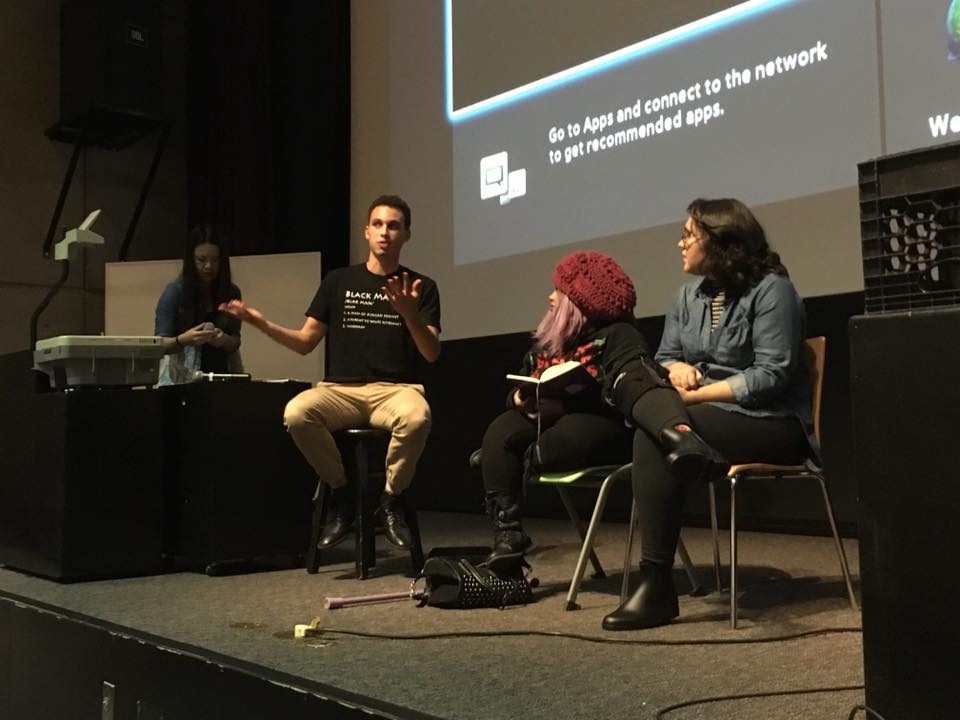
Best Awareness Week Organizer: Patie M. Bartow, Southwestern College
This was the first year that the Jag Kitchen Food Pantry at Southwestern College organized Hunger and Homelessness Awareness Week, spearheaded by Patie M. Bartow, director of the Child Development Center at Southwestern. She planned a busy week of programs, including: daily free breakfast for students; a clothing and toiletry drive; a SNAP enrollment event; a financial literacy workshop; and a community forum with their local Assemblymember. She also engaged more than a dozen organizations in the week's events.
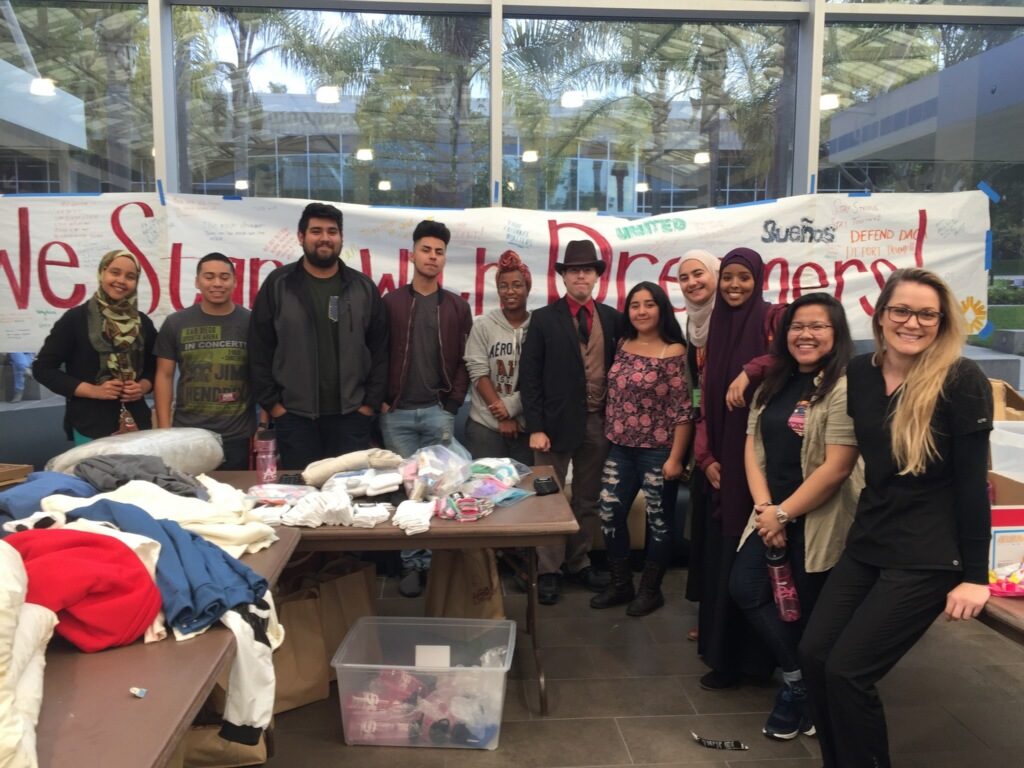
Homelessness and World Toilet Day
November 20, 2017
It's World Toilet Day today!
Currently, 4.5 billion people worldwide live without a household toilet that safely disposes of their waste. In 2013, the United Nations General Assembly designated November 19th as World Toilet Day -- a day to mobilize individuals, organizations, governments, and the private sector to tackle the global sanitation crisis. This year's World Toilet Day theme is wastewater.
The UN Sustainable Development Goals include a target to ensure that everyone has access to a safely managed household toilet by 2030. For this to be achieved we need everyone’s waste to take a 4-step journey:
- Containment: waste must be deposited into a hygienic toilet and stored in a sealed pit or tank separated from human contact.
- Transport: pipes or latrine-emptying services must move the waste to the treatment stage.
- Treatment: waste must be processed into a treated wastewater and waste products that can be safely returned to the environment.
- Disposal or Reuse: safely treated waste can be used for energy generation or as fertilizer in food production.
What happens when you don’t have access to a restroom? Recent stories from San Diego and Los Angeles show one answer.
In recent years, San Diego and Los Angeles have seen a massive outbreak of the Hepatitis A virus. As of November 13th, there have been 370 people hospitalized and 20 people have died from the virus. Governor Jerry Brown has declared a public health emergency to contain the epidemic.
Hepatitis A is a highly contagious liver disease that can spread easily through the homeless population because it thrives in unsanitary conditions and is primarily spread through contact with feces via surfaces or sexual contact. The homeless population is vulnerable to contracting the disease due to lack of access to proper restroom facilities.
To prevent the outbreak from spreading, Gil Chavez, the California State Epidemiologist, has stated that, “Sanitation, particularly access to toilet facilities and careful hand-washing after contact with feces and before eating, is important for reducing disease transmission… Anything that can be done to improve access to sanitary facilities for individuals who are homeless will go a long way in helping to prevent the outbreak.”
For the city of San Diego, sanitary conditions have been a concern for many years. In 2015, a grand jury report criticized the city for slow action on this issue. The report quoted: “For more than a decade the city has been advised of the need for more public restroom facilities in the downtown area for the general public, tourists, and the homeless.” The biggest pushback to implementing more public restrooms has come from businesses and downtown property owners because of the fear that it would attract more people experiencing homelessness.
Since September, San Diego has added only 4 portable restrooms to the downtown area, bringing the number of sites with public toilets to 23. The city has also added 60 hand-washing facilities.
Los Angeles is faced with a similar problem. A coalition of nonprofits and residents compared toilet access in Skid Row, a 50-block area of downtown Los Angeles with a large concentration of people experiencing homelessness, to the United Nations standards for long-term refugee camps. The audit was conducted in the winter of 2017 and found that the area was 80 toilets short of meeting the UN standard during nighttime hours. During the day, when shelter residents are emptied onto the streets, they are 164 toilets short. Even worse, many of those toilets were frequently out of service or lacked toilet paper or paper towels.
The good news? In 2012, the state of California passed the Human Right to Water Law, which includes access to adequate sanitation. The law states that every person in California has the right to safe, clean, affordable, and accessible water adequate for human consumption, cooking, and sanitary purposes. Unfortunately, due to limited financial and staff resources, so far the State Water Resources Control Board has been prioritizing drinking water access over sanitation.
So please take some time today, on World Toilet Day, to educate your community about the lack of access to public restrooms for people experiencing homelessness.
Homelessness and World Diabetes Day
November 14, 2017
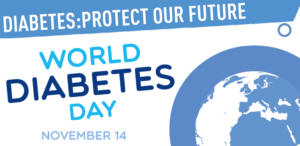 World Diabetes Day falls this year on Tuesday, November 14 -- right in the middle of Hunger and Homelessness Awareness Week.
World Diabetes Day falls this year on Tuesday, November 14 -- right in the middle of Hunger and Homelessness Awareness Week.
In recognition of this day, the National Coalition for the Homeless would like to start a conversation among healthcare providers, community members, and homeless advocates about how to help individuals who are facing illness and homelessness at the same time.
Consider the difficulty of managing a chronic illness like diabetes without the security of a home. The National Health Care for the Homeless Council (NHCHC) points out that, “[h]igh stress, unhealthy and dangerous environments, and an inability to control food intake often result in visits to emergency rooms and hospitalization which worsens overall health."
Simply having a home decreases the likelihood that an individual will be exposed to extreme weather or unsanitary conditions. Housing provides greater security, improving both mental and physical health. If you’ve ever wondered why we promote slogans like “Housing is Healthcare,” this is why.
The NHCHC report goes on to point out that treatment is also more challenging without a home. In the case of diabetes, a report released by the Health Care for the Homeless Clinician’s Network noted that, “[h]ealthy meals can be hard to find, refrigerating insulin may be impossible, and medications for other illnesses may have a negative impact on metabolism.”
The report suggests several strategies physicians can use to help their homeless patients with diabetes to manage symptoms and maintain health as much as possible. However, these patients are already facing such disadvantages that the self-care strategies recommended in the report are less than ideal.
So what is there to do? Here are a few suggestions:
1) Encourage empathy among health care providers toward their homeless patients.
It can be easy for clinicians to have preconceived notions about homeless individuals. Homeless patients receive better care when their health care providers are able to set aside any negative assumptions and approach all patients with compassion. For example, one medical provider interviewed by researchers Elder & Tubb explained, “I had the preconceived notion that if you’re homeless, you don’t have a lot to do, but they have a lot to do—they’re applying for financial assistance, looking for housing, meeting with people, all those things require a lot of waiting and sitting around…”
2) Make sure homeless individuals are receiving health education, too.
The purpose of public health education is to prevent diseases before they happen. Government health offices, non-profit health education organizations, and other similar groups need to include the homeless community in their health promotion interventions.
3) Build continuity of support among homelessness service providers.
Service providers including case managers and social workers should be made aware of basic public health approaches to share with homeless individuals. For example, a housing case worker could take on the additional task of checking in with homeless clients about whether they are taking their prescribed medications or whether they have been able to consistently make it to doctors’ appointments.
There is so much more that can be done to support homeless community members who are dealing with illnesses like diabetes. On this World Diabetes Day, we want to hear from YOU about your creative ideas for how to better reach homeless individuals with the support and information they need to maintain good health. Join the conversation by following and tweeting to @ntl_homeless and @hhweek using hashtags #hhweek and #WDD.
Additionally, to learn more, consider registering for a Homelessness & Diabetes webinar being put on by the National Health Care for the Homeless Council on Thursday, 11/16, from 1-2pm CDT. Click here to register.
References
Elder, N.C. & Tubb, M.R. (2014). Diabetes in homeless persons: Barriers and enablers to health as perceived by patients, medical, and social service providers. Social Work in Public Health, 29(3): 220-231. DOI: 10.1080/19371918.2013.776391.
Kalinowski, A., Tinker, T., Wismer, B., & Meinbresse, M. (2013). “Adapting your practice: Treatment recommendations for patients who are homeless with diabetes mellitus.”
National Health Care for the Homeless Council. (2011). “Homelessness & health: What’s the connection?” Fact sheet.
Celebrate World Kindness Day
November 14, 2017
“After several speakers told city officials that they wanted the homeless to be forced to leave, one man drew particularly loud applause when he hinted at violence:
“We’re all armed,” he told officials. “Maybe we should take our city back."
This excerpt is from a recently published article on the way that compassion for the un-housed community is running out among parts of the housed community in Southern California. Meanwhile, in other cities throughout the United States, levels of violence toward the homeless are rising, a growing number of city leaders are making it a crime to be homeless, and a lack of affordable housing puts an ever-greater number of people at risk of homelessness or keeps already un-housed individuals from being able to access housing.
Many towns and cities all over the country face significant challenges in garnering the resources and capacity to meet the needs of every resident. The reality of these challenges, however, is no excuse for throwing our homeless neighbors under the bus or considering their needs to less important than those of more powerful or well-established community members.
The frustration expressed by the California residents in the previously mentioned article reflects the NIMBY (Not In My Back Yard) attitude. Homelessness is a problem that no community wants to have to deal with, and so the NIMBY approach tackles homelessness by pushing it out of sight or attempting to send homeless individuals away – whether to prison or to another location. A NIMBY mindset is evident in recent news stories about bans on feeding the homeless in Houston or the statewide sit-lie ban that was proposed in Hawaii.
While it is reasonable that communities should feel frustrated and overwhelmed by the growing number of homeless men, women, and children throughout the country, our frustration should stem from empathy and deep compassion for the individuals who are experiencing homelessness, rather than from irritation at the inconveniences we may face as a consequence of the existence of homelessness in our neighborhoods.
What mindset can we adopt instead? Other community members in California and throughout the country are spreading the YIMBY (YES In My Back Yard) movement as an alternative to the negativity and anger associated with the NIMBY approach. While YIMBY advocates also encounter frustration and discouragement, their movement centers on taking ownership over the challenges that accompany homelessness and taking responsibility to do whatever they can to alleviate the struggles of the un-housed. YIMBY groups advocate, among other things, for more affordable housing and for community development and planning that does not exclude or privilege any group over another.
Today, November 13th, we celebrate World Kindness Day. Wherever you live, and whether or not you are part of a YIMBY organization, you can choose kindness and compassion in the way that you talk about homelessness and the individuals who are experiencing it.
There are innumerable ways that you can stand up for and support your un-housed neighbors! For just a few ideas of how to do so during this week of Hunger & Homelessness Awareness, check out the National Coalition for the Homeless’ list of ways to get involved. Ending homelessness is the responsibility of each and every one of us. Today, choose kindness and choose a YIMBY attitude, because only with compassion and collaboration can we end homelessness.
Five Ways You Can Help End Global Hunger
November 13, 2017
 This post comes from our partners at ONE Campus.
This post comes from our partners at ONE Campus.
You probably know that your voice is important to the global fight to end poverty. Did you know that your ability to influence policy makers and elected officials comes at the local level?
At ONE, we work to connect the local to the global by mobilizing people to advocate to their elected leaders for an end to extreme global poverty. For Hunger and Homelessness Awareness Week, we wanted to share five actions you can take to end global hunger:
1) Write a letter to your Member of Congress. For just 1% of the federal budget, the U.S. development account supports programs that fight hunger and malnutrition and protect food security around the world. Writing a personalized, handwritten message about this issue to your Member of Congress this week makes a powerful impact. Use this sample letter -- just email campus@one.org to report your letters so we can track our impact.
2) Pick up your phone and call your Member of Congress. A phone call is another effective action you can take to protect funding for programs that fight hunger globally. It takes less than two minutes to complete a call to your Member of Congress. Just remember to call during east coast business hours. Call 1-888-213-2881 and use the call script here.
3) Spread the word about the Global Goals. In 2015, the world came together and pledged to end hunger by 2030 and set 16 other poverty-eradicating goals. It’s our job to make sure people know about these goals so we can hold our world leaders accountable for meeting them. Check out how the world is coming together to end global hunger: https://www.one.org/us/globalgoals/zero-hunger/.
4) Educate yourself. As activists, it is important that we keep learning. For example: Right now, 20 million people in Nigeria, Somalia, South Sudan, and Yemen are at risk of dying of starvation due to famine: https://www.one.org/us/2017/10/16/famine-africa-causes/.
5) Students: Lead the fight against extreme poverty on your campus. Sign up to become a ONE Campus Leader and start a ONE chapter at your school. https://campus.one.org/campusleader/
How To: Organize a Sleep-Out
November 7, 2017
The “One Night Without a Home” Sleep Out is a common part of many Hunger and Homelessness Awareness Weeks. This event is an opportunity for participants to spend a night outside to discuss, think, and learn about homelessness. Although one night outside can in no way simulate homelessness, this awareness-raising activity can promote advocacy, awareness, and education.
The Format:
- This event usually lasts for about 12 hours, often from 7 p.m. until the morning.
- Develop your mission statement
- Address the questions of: Who; What; Where; When; and Why
- Choose an appropriate site, someplace central to community activities.
- Make sure you receive permission right away from your city or county officials and community/school administrators concerning location, security, and other logistics.
- If you are doing your event in a public space please make sure to call your local parks and recreation department to finalize any permits that may be required.
- Invite currently or formerly homeless people, community leaders, residents, and community spokespeople to speak during the event.
- Ask local businesses for event donations, such as food, drinks, supplies, or money.
- Ask other groups to co-sponsor the event such as Food Not Bombs, which can serve food to homeless guests
- Prepare group discussion topics that will promote interaction among all participants.
- Include information that allows participants to act upon what they’ve learned (directions to local groups where they can perform community service, letter writing, advocacy, etc.).
- In the morning, allow time for participants to share their thoughts and concerns.
Sample Agenda:
- 6:00 p.m.: Gather participants. Provide transportation for homeless/formerly homeless guests
- 7:00 p.m.: Serve coffee and/or a meal
- 8:00 p.m.: Have speakers present
- 9:00 p.m.: Hold discussion groups
- 11:00 p.m.: Late night food/music
- 7:00 a.m.: Breakfast/closing remarks/wrap up
Additional Suggestions:
- Be mindful of what to bring. Do not bring laptops, tablets, or alcoholic beverages.
- Don't let people have pizza or other food delivered.
- Consider bringing supplies that participants can donate to people experiencing homelessness.
- Distribute fact sheets and information about hunger and homelessness, plus a schedule of other events that are taking place throughout the week.
- Invite the media. Assign a spokesperson in charge of representing the event to reporters.
- Post a list of rules on the night of the event.
- Designate a time during the evening to discuss hunger and homelessness in your community.
Wrap Up:
- Appoint a committee to draft a group resolution based on the discussion that night.
- Establish a common ground for participants who would like to take future action.
- Collect names, phone numbers, and email addresses of participants for future reference and to provide them with information about local service sites.
Reaching Out to the Media
November 2, 2017
Hunger & Homelessness Awareness Week 2017 is right around the corner!
As you make final preparations, we wanted to stress the importance of inviting the media to cover your events.
Media outreach is an important component of any good awareness week. Media coverage will get your message in front of thousands of additional people and encourage them to think about hunger and homelessness.
To help you with your media outreach efforts, we've assembled a Media Outreach Toolkit. The toolkit includes basic how-tos on how to generate media coverage, as well as a news release template that you can use.
Download the Media Outreach Toolkit today.
We're also available to provide one-on-one media training if you want additional assistance.
